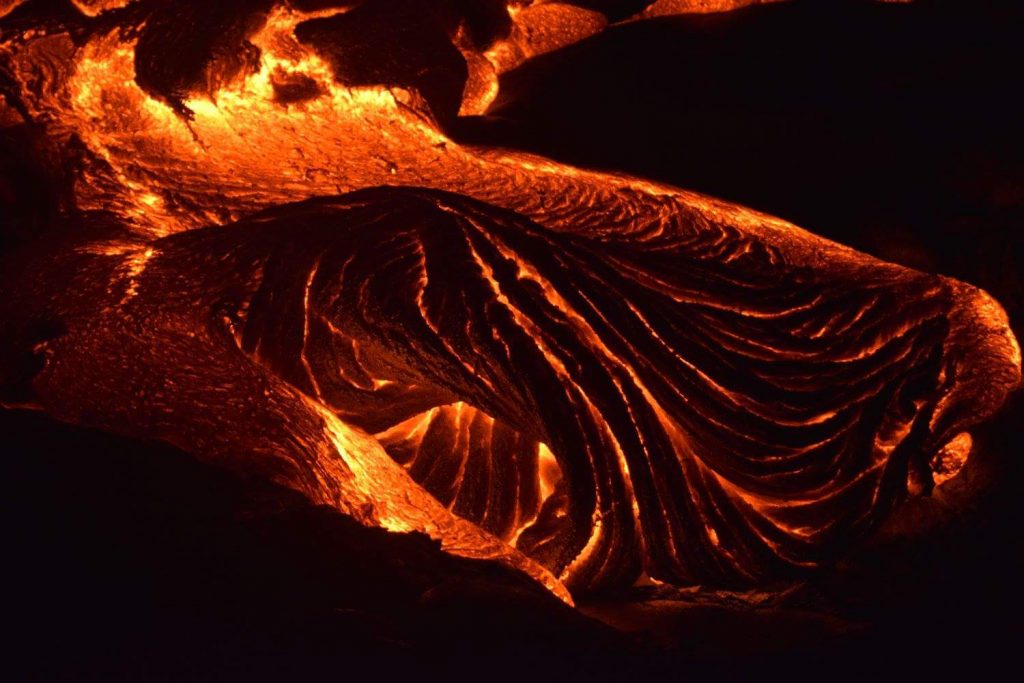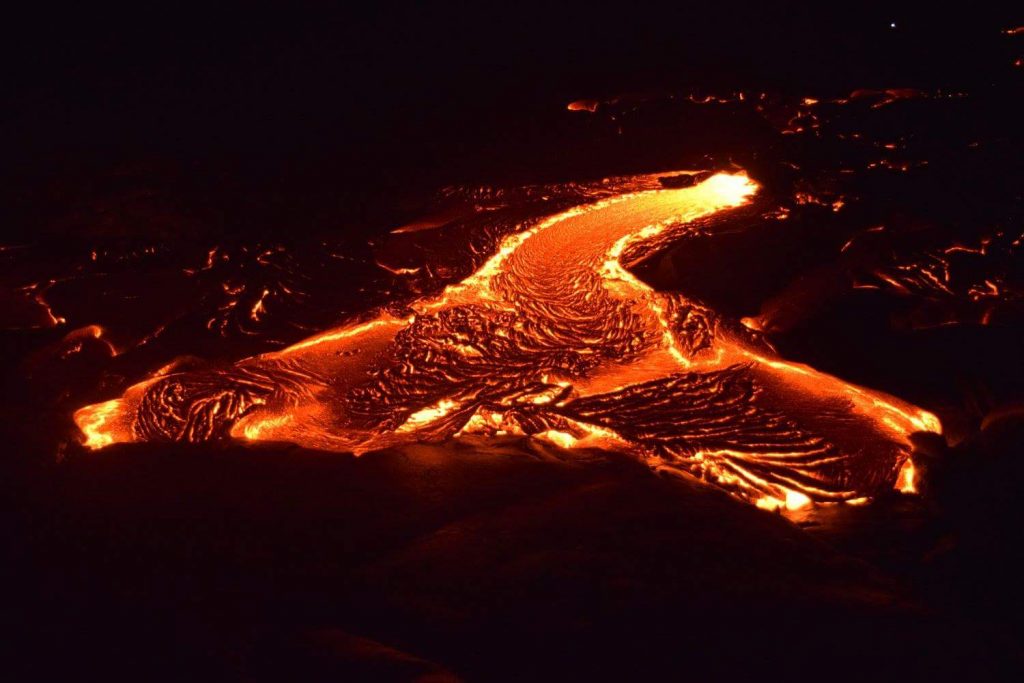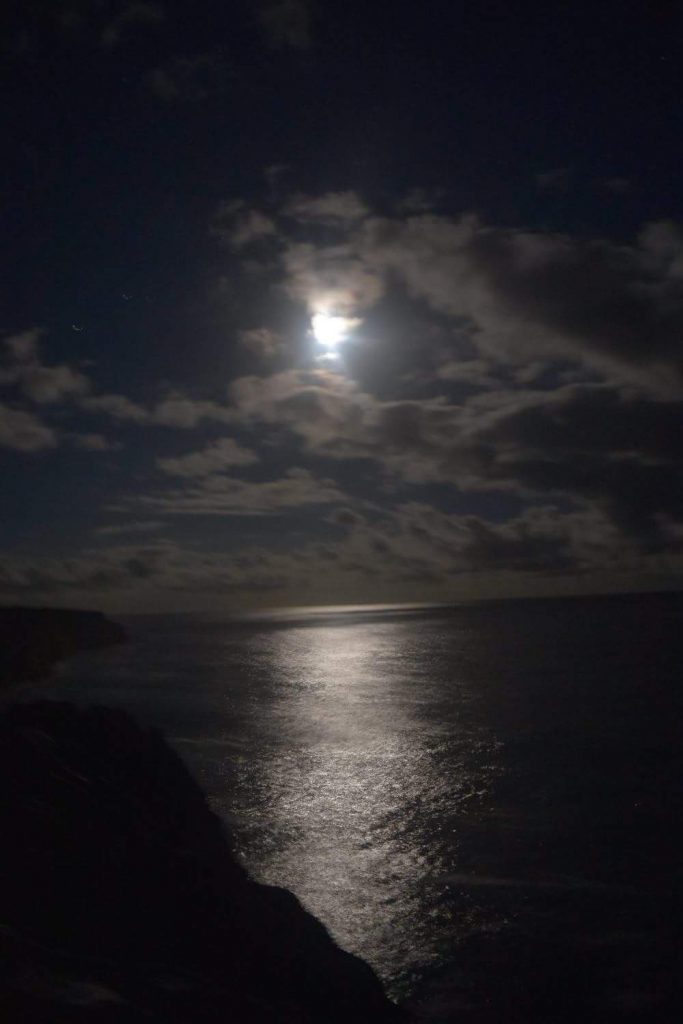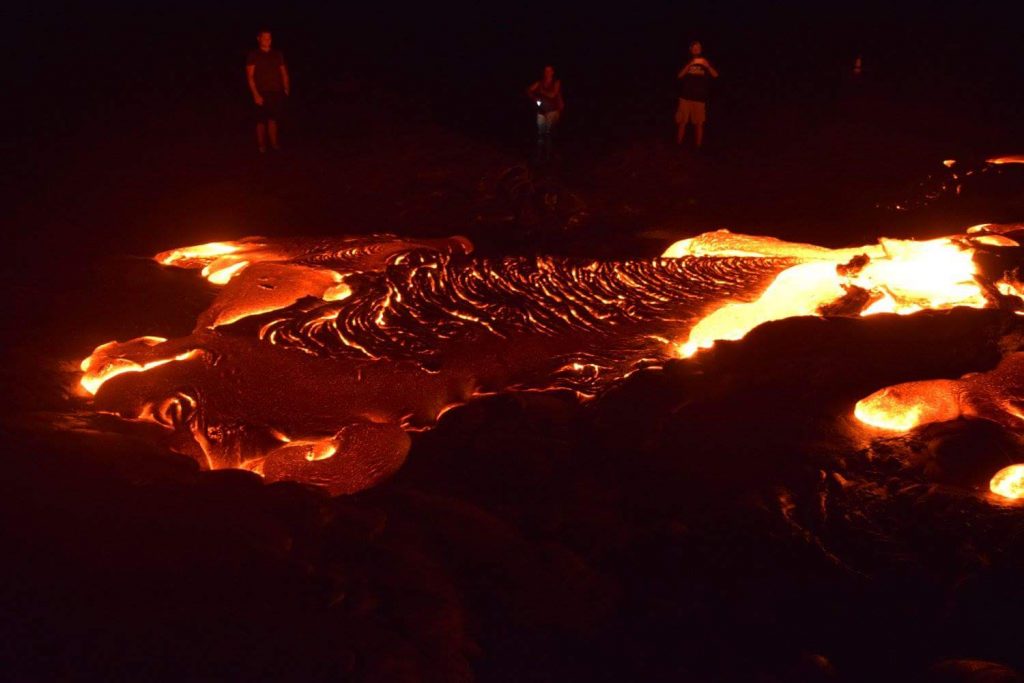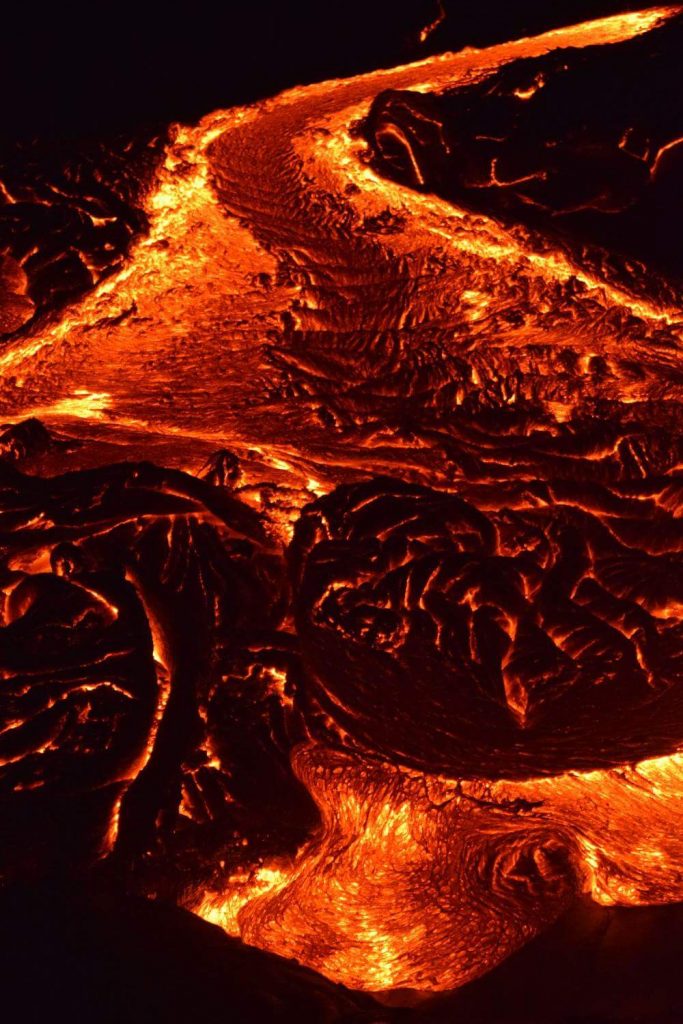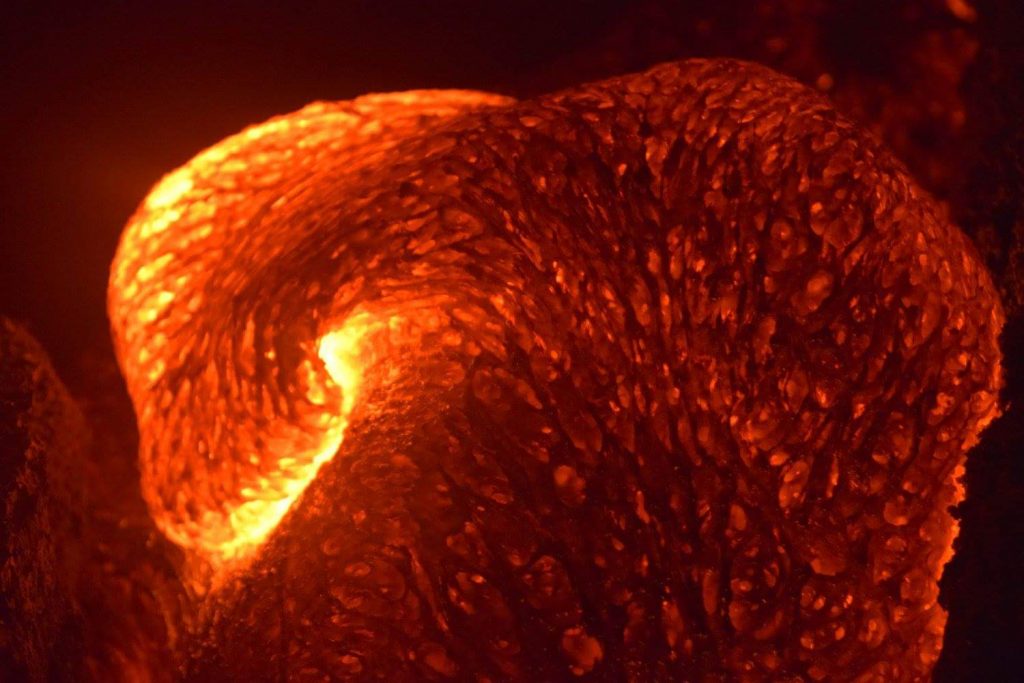VOLCANO UPDATE: Lava Meets Ocean
https://www.youtube.com/watch?v=OLYb2d1tWXU&feature=youtu.be
UPDATE: July 27, 2016
The 61G lava flow extending southeast of Puʻu ʻŌʻō entered the ocean, as of 1:12 a.m. HST yesterday.
It is currently 20 meters (66 feet) wide where it spills over the sea cliff.
Another narrow lobe of the flow has advanced along the west margin of the main flow.
Areas of incandescence remain visible in overnight webcam views of the active lava flow field, marking lava tube skylights and areas of active lava on the pali and along the flow as it extends towards the coast.
ORIGINAL POST: July 26, 2016
Lava from Kīlauea Volcano reached the ocean early Tuesday morning, July 25, for the first time since 2013.
The 61G lava flow extending southeast of Puʻu ʻŌʻō towards the coastal plain on Kīlauea’s south flank remains active, reaching the ocean this morning at 1:12 a.m.
Areas of incandescence remain visible in overnight webcam views of the active lava flow field, marking lava tube skylights and areas of active lava on the pali and along the flow as it extends towards the coast.
As a strong caution to visitors viewing the new ocean entry—where lava meets the sea—for Flow 61G, there are additional significant hazards besides walking on uneven surfaces and around unstable, extremely steep sea cliffs.
Venturing too close to an ocean entry exposes you to flying debris created by the explosive interaction between lava and water. Also, the new land created is unstable because it is built on unconsolidated lava fragments and sand. This loose material can easily be eroded away by surf causing the new land to become unsupported and slide into the sea.
Finally, the interaction of lava with the ocean creates an acidic plume laden with fine volcanic particles that can irritate the skin, eyes, and lungs.
HVO scientists recently installed a new webcam to help track lava flow activity on Kīlauea Volcano’s south flank.
Activity Summary: Eruptive activity continues at Kīlauea Volcano’s summit and East Rift Zone. The 61G lava flow extending southeast of Puʻu ʻŌʻō entered the ocean, as of 1:12 a.m. HST, but poses no threat to nearby communities. The lava lake at Halemaʻumaʻu Crater continues to circulate and intermittently spatter. Seismicity and deformation rates throughout the volcano remain at background levels.
Summit Observations: The lava lake within the Halemaʻumaʻu Overlook crater remains active. The depth to the lake was estimated at 25.5 m (84 ft) below the crater rim, measured on Sunday. Tiltmeters at Kīlauea’s summit recorded flat tilt. Seismicity is within normal, background rates with tremor fluctuations associated with lava lake spattering. The summit sulfur dioxide emission rate ranged from 2,400 to 5,000 metric tons/day.
Puʻu ʻŌʻō Observations: Webcam images over the past 24 hours show persistent glow at long-term sources within the crater. There were no significant changes in seismicity or tilt over the past 24 hours. The sulfur dioxide emission rate from all East Rift Zone vents on July 25 was about 280 metric tons/day.
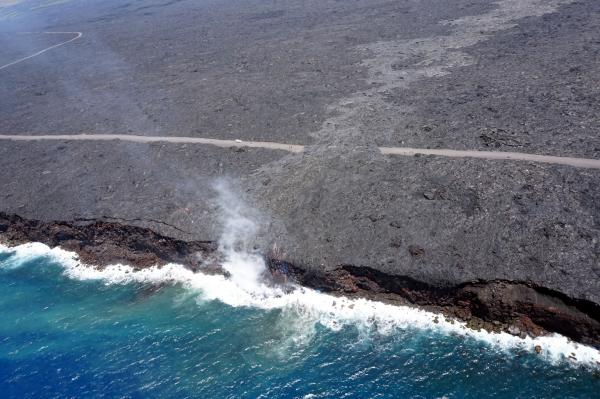
Just over two months since the start of the 61g flow, it reached the ocean on July 26 at 1:15 am HST. The narrow ocean entry was creating a small plume of gas and steam during today’s overflight as the lava came into contact with the ocean. USGS/HVO photo.
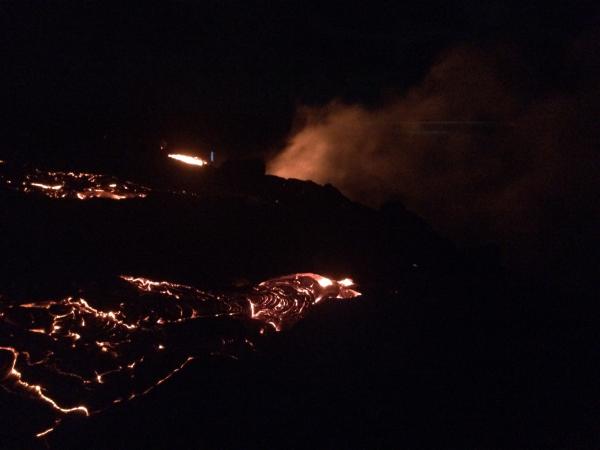
This photograph looks towards the ocean, from a spot along the west margin of the flow, showing the ocean entry plume just minutes after lava first reached the water, July 26, 2016. USGS/HVO photo.

A close-up view of the ocean entry with multiple small fingers of lava spilling over the cliff, July 26, 2016. USGS/HVO photo.





